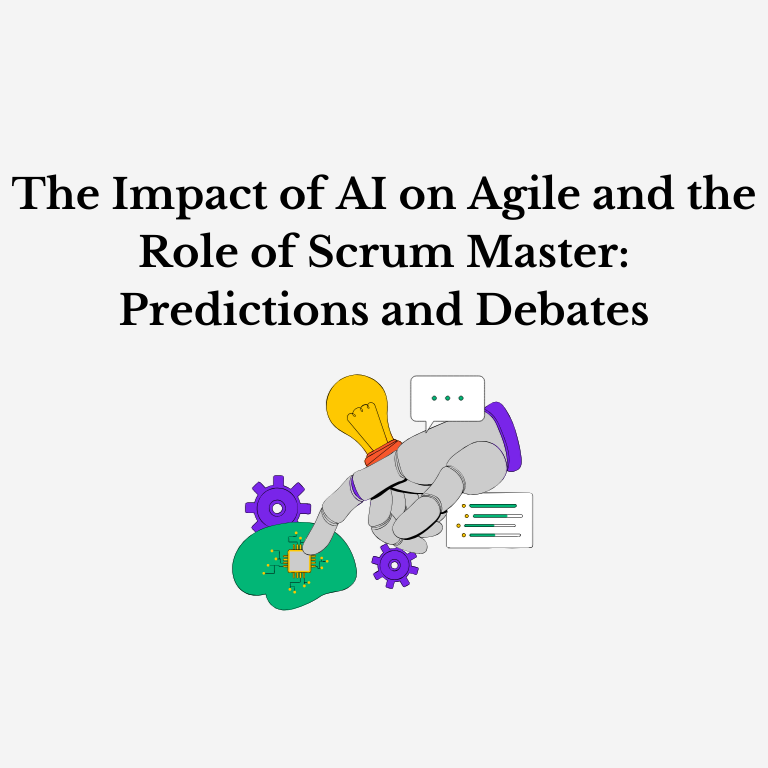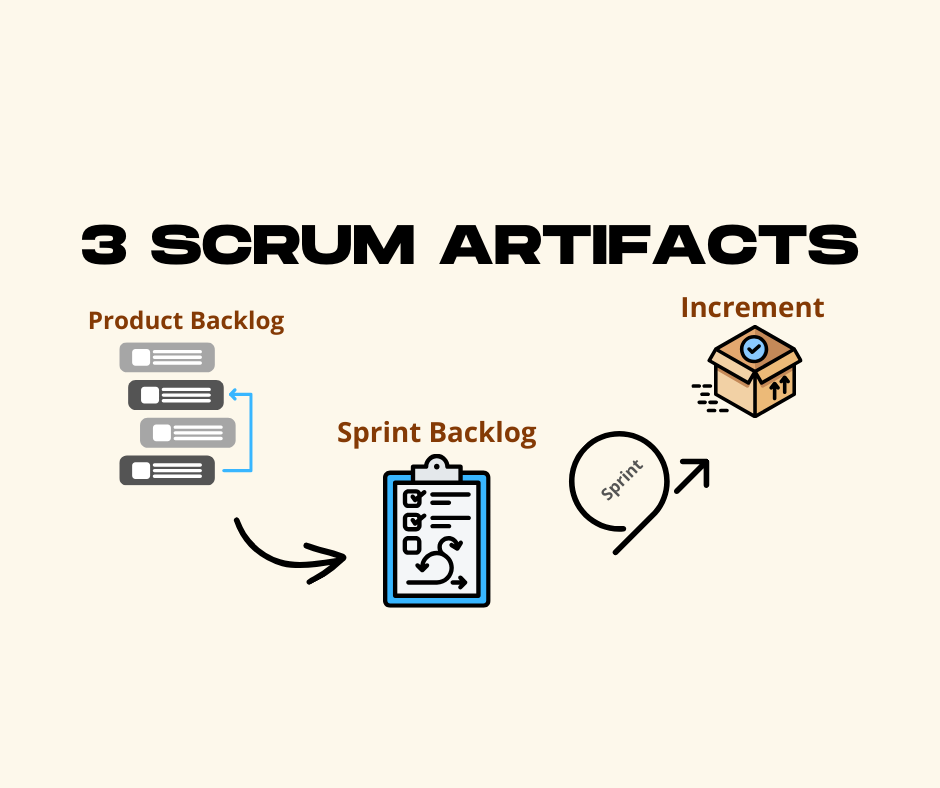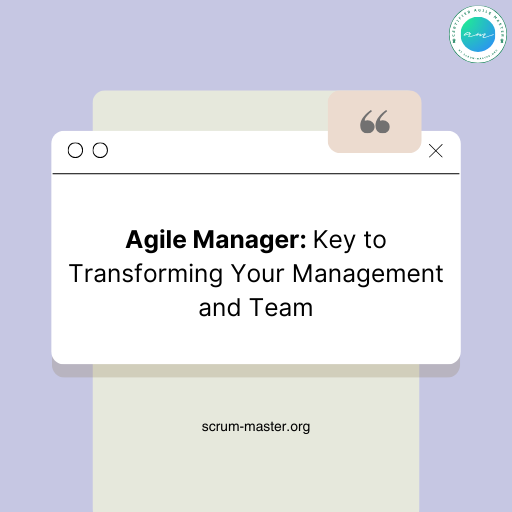Artificial intelligence (AI) is transforming many aspects of our working lives, including agile project management. In this article, we’ll explore five bold predictions about the future of Agile and the Scrum Master role in the age of AI. These predictions could spark heated debates about how AI will influence agile practices and key roles within teams.

Index
Scrum Masters to be replaced by AI agents
The role of Scrum Master is first and foremost a role: the Scrum Master is often perceived as a job, but originally it was a role within the team. It’s not necessarily a fixed position, but rather a function that someone in the team can fill.
Automating administrative tasks: AI agents could take over many of the administrative and coordination tasks that Scrum Masters perform, such as planning sprints, tracking tasks and organizing meetings. However, these tasks are only part of the role.
Helping to resolve technical and organizational obstacles: Advanced AI could help to resolve certain technical and organizational obstacles through data analysis and recommendations based on recognized patterns. However, human intervention is often necessary to navigate the complexities of organizational dynamics and interpersonal relationships.
AI’s limitations in human interaction: The human aspects of the Scrum Master role, such as workshop facilitation, conflict management and mentoring, are areas where artificial intelligence would struggle to effectively replace a human being. Conflict resolution and facilitation require skills in communication, empathy and understanding the nuances of human interaction, skills where AI is still very limited.
AI reliability and errors: Despite its advances, AI is not infallible. It can generate errors and provide recommendations based on biased or incorrect data. If team members don’t have a good grasp of agile principles, they could blindly follow the AI’s recommendations, which could lead to costly mistakes.
In summary, while AI can automate certain Scrum Master tasks and help in the resolution of certain types of problems, it cannot completely replace the human role due to the interpersonal skills and ability to manage complex and nuanced situations.

Predictive sprint management with Artificial Intelligence
We will examine the benefits and risks of using artificial intelligence for predictive sprint management:
- Accuracy and real-time adjustments: Thanks to machine learning, AIs can analyze data from Jira, CI/CD tools, code, testing tools, as well as meetings and communication tools. Using this information, they could predict sprint results with great accuracy, and adjust goals and priorities in real time. This would optimize value delivery by identifying potential bottlenecks and proposing immediate solutions.
More efficient sprints: A data-rich AI system could actually make sprints more efficient. By analyzing past trends, team performance and recurring obstacles, artificial intelligence could suggest proactive adjustments to improve productivity. This would enable faster delivery of value to customers, minimizing delays and optimizing the use of resources.
Instant improvements: With access to large amounts of data in real time, AI could suggest instant improvements, such as redistributing tasks, changing priorities or optimizing development processes. This could help teams to adapt quickly to changes and maintain a steady pace of delivery.
Problems and limitations :
Data confidentiality and security: As with the previous point, access to a large amount of confidential data raises security and confidentiality issues. Companies need to ensure that this data is protected and that AI respects privacy policies. It’s essential to manage the risks associated with storing and processing sensitive data, which is the company’s very asset: its software and its people.
Dependence on AI: Over-reliance on AI for sprint management could reduce the ability of teams to make autonomous decisions and develop their project management skills. Teams could become less proactive and more reactive, relying entirely on artificial intelligence recommendations without developing their own critical judgment.
Reliability of predictions: While AI can improve the accuracy of predictions, it is not infallible. Predictions based on past data may not always take into account unforeseen variables or rapid changes in the working environment. Misinterpretation or bias in the data can also lead to sub-optimal recommendations.
Impact on team dynamics: Real-time adjustments proposed by AI could sometimes conflict with existing team dynamics. For example, an automatic redistribution of tasks may not take into account the personal preferences or specific skills of team members, which could affect motivation and job satisfaction.
In conclusion, while AI can offer significant benefits in terms of predictive sprint management, it also presents significant challenges in terms of confidentiality, dependency and team dynamics. A careful balance between the use of AI and human intervention is needed to maximize benefits while minimizing risks.
Improve your employability with Agile Master Certification
Take the Agile Master Certification for just €59.99 plus VAT, valid for life. This certification proves your agility skills, enhances your employability and helps you stand out in the job market. Join the community of certified Agile Master professionals today
AI will redefine retrospective practices
Let’s take a look at how AI could transform retrospective practices, and what challenges this transformation could create:
Extensive data collection and analysis: For AI to be able to propose precise, customized improvements, it needs access to a multitude of data sources, including Jira, CI/CD tools, code, testing tools, as well as all meetings and communication tools. This would enable a holistic analysis of team dynamics, performance and members’ feelings.
Confidentiality and data security issues: Access to large amounts of confidential data poses security and confidentiality problems. Companies need to ensure that this data is protected and that AI respects privacy policies. In addition, we need to consider the legal and ethical implications of processing this data.
AI’s limitations in understanding human nuances: A human Scrum Master can pick up on non-verbal elements, unspoken words and subtle feelings by talking to team members, observing their interactions and building trusting relationships. These nuances are difficult to perceive for artificial intelligence, which is mainly based on structured, textual data.
Risks of misinterpretation: Even with access to a wealth of data, AI can misinterpret or miss the full context of human interactions. Recommendations based on incorrect analyses could lead to sub-optimal decisions or conflict within the team.
Importance of human interaction: Retrospectives are not only moments of analysis, but also of open communication, sharing and team-building. AI could provide valuable insights, but the Scrum Master’s role of facilitation and mediation remains crucial to maintaining a healthy team dynamic.
Evolution of AI-assisted retrospective tools: We could imagine AI-assisted retrospective tools that complement the work of the Scrum Master, rather than replacing it. These tools could provide data-driven insights, which the Scrum Master could then interpret and present to the team.
Balance between AI and human interaction: A balance could be found between the use of AI for data analysis and human intervention for the interpretation and implementation of recommendations. This would make it possible to harness the benefits of artificial intelligence while preserving the essential human aspects.
In conclusion, although AI can bring significant added value in the analysis of team dynamics and performance, it cannot completely replace the human role of the Scrum Master, particularly in the relational and emotional aspects.

AI as a facilitator of agility at scale
This section discusses the role of AI in facilitating large-scale agility and its implications :
Orchestration of multiple teams: Large-scale agile frameworks like SAFe© require complex coordination between multiple teams. AI systems could facilitate this orchestration by managing dependencies, optimizing workflows and ensuring smooth communication between teams. This could improve the synchronization and coherence of efforts across the organization.
Workflow optimization: AI could analyze work processes across different teams, identify inefficiencies and suggest improvements. By optimizing workflows, artificial intelligence could help reduce lead times, minimize bottlenecks and improve overall productivity.
Managing dependencies: One of the major challenges of large-scale agility is managing dependencies between teams. AI could monitor interdependencies in real time and suggest adjustments to minimize conflicts and delays. It could also anticipate the impact of changes and adjust plans accordingly.
Strategic alignment: AI could help align team efforts with the organization’s strategic objectives. By analyzing data from various teams and comparing it with corporate objectives, artificial intelligence could provide insights to adjust priorities and ensure that all efforts are directed towards achieving strategic goals.
Positive and negative consequences :
Positive consequences:
- Increased efficiency: AI’s ability to analyze and optimize processes on a large scale could lead to significant efficiency gains. Teams could work more harmoniously, reducing conflict and improving value delivery.
- Reduced human error: By automating coordination and dependency management, AI could reduce human error and improve the accuracy of plans and forecasts.
- Improved adaptability: with AI constantly monitoring dynamics and proposing adjustments, organizations could react more quickly to changes and unforeseen events.
Negative consequences:
- Increased complexity: Integrating AI systems into large-scale management could introduce a new layer of complexity. Organizations will need to invest in training and adaptation to take full advantage of these technologies.
- Loss of human control: Over-reliance on AI could lead to a loss of control and understanding on the part of teams and managers. It’s crucial to maintain a balance between automation and human intervention.
- Trust issues: teams may be reluctant to follow AI recommendations, especially if they don’t understand the underlying processes. Building trust in AI systems will be a major challenge.
In conclusion, while AI can greatly facilitate large-scale agility by optimizing processes and improving coordination, it also introduces challenges in terms of complexity, control and trust. A careful balance between technology and human intervention is needed to maximize benefits.

Conclusion
Integrating AI into agile practices and the Scrum Master role offers exciting opportunities to improve efficiency and value delivery. However, it also presents significant challenges in terms of confidentiality, security, complexity and trust. A careful balance between the use of AI and human intervention is needed to maximize benefits while minimizing risks.
By keeping an eye on these developments, agility professionals will be able to reap the benefits of AI while preserving the essential human aspects of their work.
Feel free to share your thoughts and continue the discussion in the comments below or on LinkedIn. We want to hear from you!







